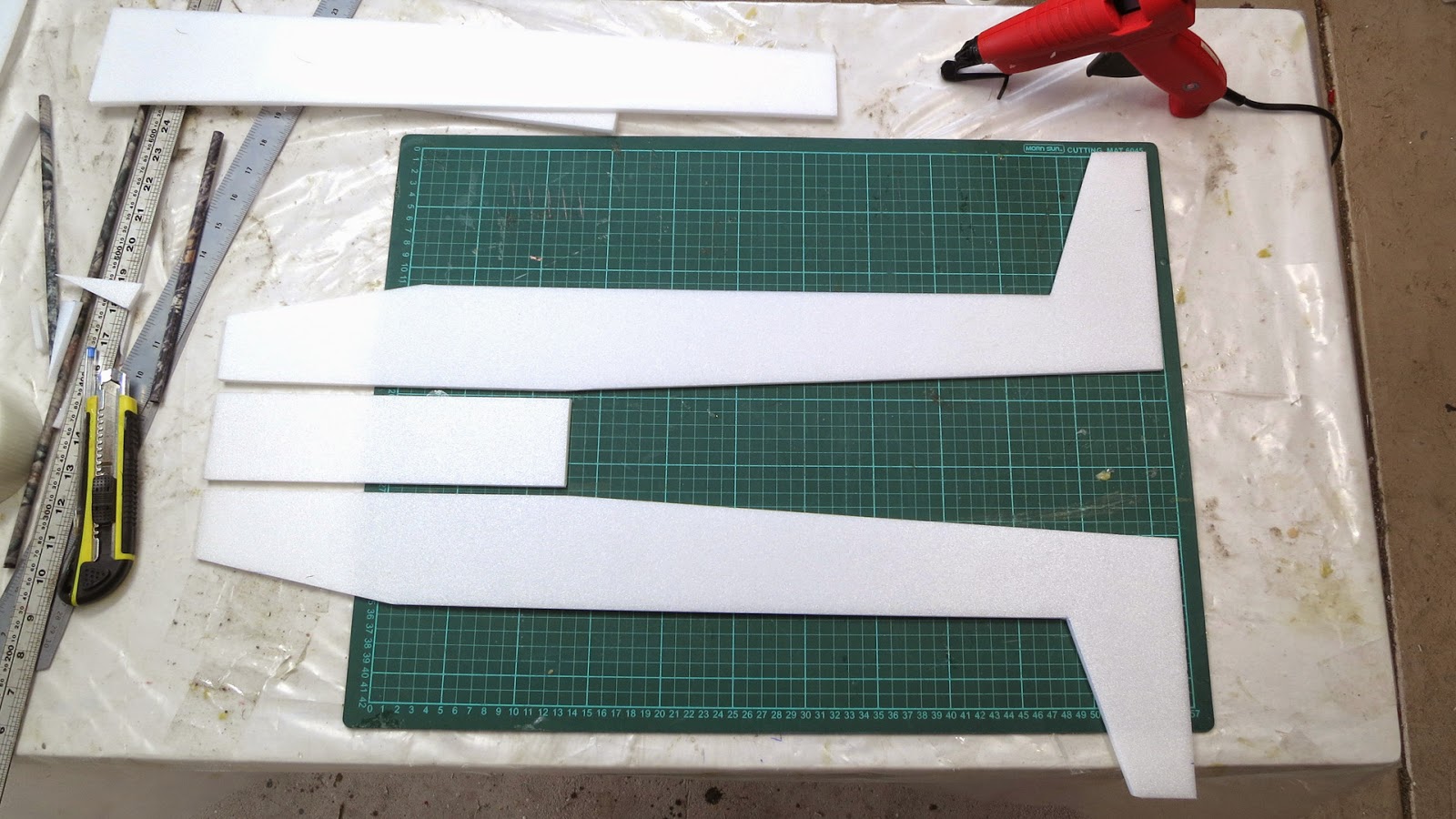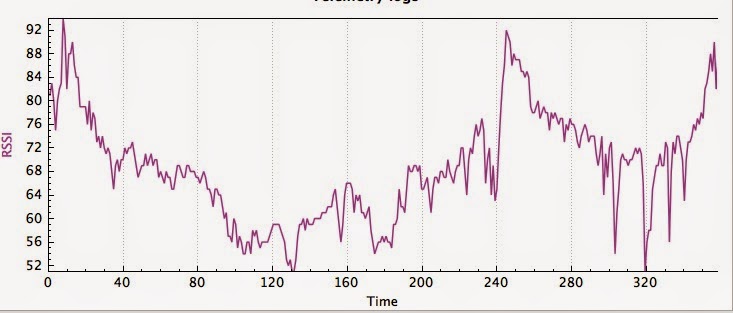 This design was inspired by a friend who wanted to take one of my "retired" planes to learn how to fly. So I gathered bits and pieces together and tried to come up with an easy to fly, crash proof trainer.
This design was inspired by a friend who wanted to take one of my "retired" planes to learn how to fly. So I gathered bits and pieces together and tried to come up with an easy to fly, crash proof trainer.It only has rudder elevator and throttle, no ailerons. I wanted it to be as light as possible for slow and easy flight with a big energy absorbing nose and a tough fuselage.
The fuselage was shaped from a 50 x 100 x 370 block of XPS insulation foam and the tail planes are 8mm panels of the same foam. The boom is a Skyshark P4X 7.6mm tube.
The hotwire-cut 170mm clark y wing comes from rescued sections of the drowned Fokker (which now has new wings) Three x 360mm sections were glued together with the tips each raised 120mm. No spars are needed to hold the polyhedral due to the tape covering and large join surface area for gluing.
 The nose is soft packing foam covered with tape and completely encases the 1300mAh Lipo battery.
The nose is soft packing foam covered with tape and completely encases the 1300mAh Lipo battery.The motor is the original Bixler 2, servos are cheap 9g HXTs, and it has a Plush 18A ESC and HobbyKing 3 channel receiver.
All up weight with the battery adds up to 550g, giving a slow continuous cruising flight time of over 30min.
This plane is very smooth and stable and with correct trim will fly hands off.
At this stage the nose, fuse and wings are almost bullet proof, but the tail planes are a bit too delicate. Thinner sheets of XPS foam are quite brittle so some kind of reinforcing is needed. Both the elevator and rudder have cracked during the test flights so I have added a 0.5 x 3mm CF spars.
Might be better to use depron or corflute for the tail.
Dimensions
Flight video - motor slope soaring
Build video
UPDATE 30 March 2016
 After some tough flight testing by my dedicated student test pilot it became apparent that this tail
After some tough flight testing by my dedicated student test pilot it became apparent that this tailSo here is the new tougher tail design made from depron. The tail to boom join has extra foam fillets either side for more gluing area and to raise the elevator a little.
The new wing has more area and less polyhedral for smoother flight.
Update overview video
Tail build video
Dimensions for the updated tail design
MATERIALS
All my building materials and RC gear - http://newtonairlines.blogspot.com.au/2015/03/materials-and-links.html
Knauf XPS insulation foam - http://www.bunnings.com.au/our-range/building-hardware/building-construction/insulation/panels
Skyshark P4X spars - http://www.kitesandfunthings.com/ProductInfo.aspx?productid=SSP4XCAM0
New Stuff iron-on film - EZload laminate - http://www.neopostonline.com.au/lamination/ez-load-roll-film
Blank ID cards - Ebay http://www.ebay.com.au/usr/y2store?_trksid=p3984.m1439.l2754
BUILD VIDEOS
Hot wire cutting rig - https://www.youtube.com/watch?v=JIRzQO4F8ck
The Art of Hotwire - https://www.youtube.com/watch?v=_tt56xp2lQk



















































